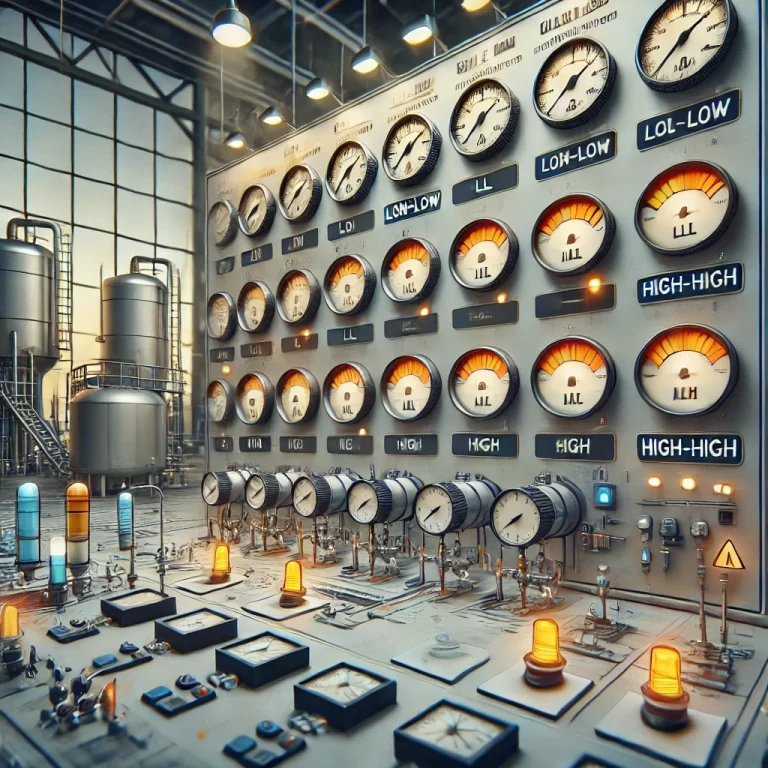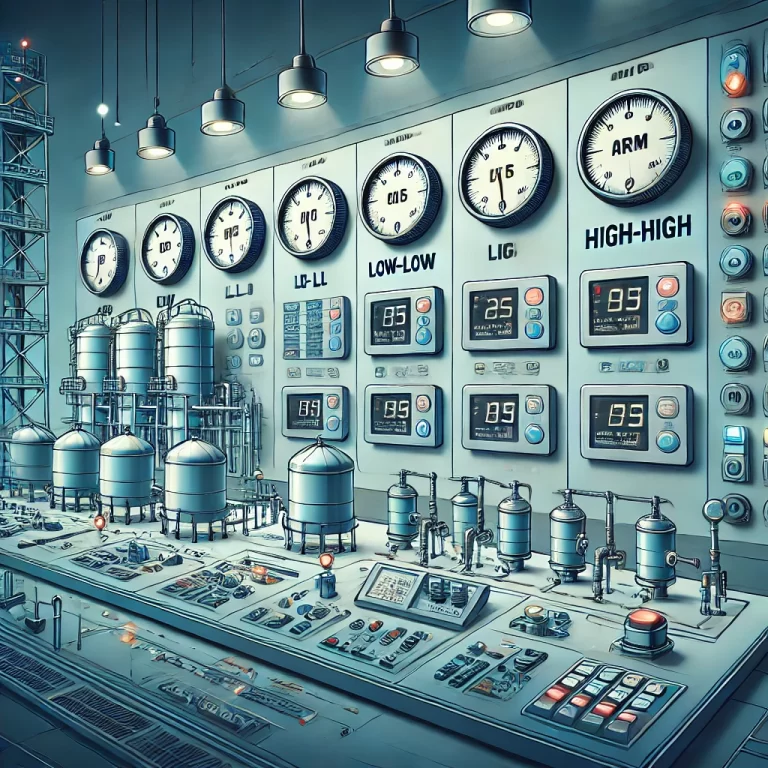In Distributed Control Systems (DCS) and industrial automation, setting up Low-Low (LL) and High-High (HH) alarms is crucial for providing comprehensive safety protection and operational guidance. While Low (L) and High (H) alarms are already in place to signal when process parameters deviate from their normal ranges, LL and HH alarms are introduced to handle more severe abnormal conditions. The reasons for this are outlined below:
1. Hierarchical Alarm System: Differentiating the Severity of Issues
Low (L) and High (H) Alarms: Typically used to alert operators when process parameters deviate from their normal operating range but have not yet reached a critical level. These alarms give operators time to adjust or intervene before the situation becomes dangerous.
Low-Low (LL) and High-High (HH) Alarms: These alarms are activated when process parameters reach critical, hazardous levels that may directly threaten equipment safety, product quality, or personnel. Immediate action is required in these cases, and these alarms may trigger emergency shutdowns or other safety protocols.
By having multiple levels of alarms, operators can more clearly assess the severity of the issue and take appropriate actions. This ensures that minor deviations can be addressed early, while more severe, potentially dangerous situations trigger immediate safety measures.

2. Prevention of Single Alarm Failure
Relying solely on Low and High alarms can be risky. If the alarm system fails or if the operator does not respond promptly to an alert, the consequences could be severe. The introduction of LL and HH alarms adds an extra layer of protection. Even if the Low or High alarms are either not triggered or overlooked, the LL and HH alarms provide a backup, ensuring that critical situations are addressed.
3. Triggering Different Control Strategies
Low and High Alarms: These alarms are generally used as a warning system to prompt operators to take corrective action. They may not automatically trigger control actions in the system.
Low-Low and High-High Alarms: These alarms often trigger more immediate and automated control actions, such as:
- Automatically closing valves
- Stopping pumps or compressors
- Activating backup systems
- Triggering an Emergency Shutdown (ESD)
The distinction between standard alarms (L and H) and critical alarms (LL and HH) is essential for managing both normal operations and emergency situations.
4. Compliance with Safety Standards and Regulations
In many industries such as oil and gas, power generation, pharmaceuticals, and chemicals, safety standards and regulations require the implementation of multi-level alarms for critical parameters to ensure system safety and reliability. The inclusion of Low-Low and High-High alarms helps meet these regulatory requirements. They provide an additional layer of safety to safeguard against system failures and unexpected events.
For example, in accordance with the IEC 61508 standard, which outlines functional safety of electrical, electronic, and programmable electronic safety-related systems, having multiple alarm levels (such as LL and HH) is an essential part of risk reduction strategies.
5. Adaptation to Rapidly Changing Processes
In certain processes, parameters can change very quickly, and relying solely on Low and High alarms may not provide enough time for response. Low-Low and High-High alarms offer an additional buffer and protective measure, ensuring quicker reactions when critical changes occur in fast-paced environments.

Example: Tank Level Control
Consider the case of a tank level control system:
Low Alarm (L): The tank level drops below the normal operating range, alerting the operator that material needs to be added.
Low-Low Alarm (LL): The level becomes extremely low, possibly causing the pump to run dry, which could damage the equipment. This triggers an automatic shutdown of the pump to prevent damage.
High Alarm (H): The tank level rises above the normal range, indicating that material should be stopped from being added.
High-High Alarm (HH): The tank level reaches a dangerously high level, which could cause overflow or equipment damage. This triggers an automatic closing of the feed valve to prevent overflow and protect the system.
Conclusion
The implementation of Low-Low and High-High alarms is crucial for providing a comprehensive safety system. These alarms help distinguish between varying levels of danger and ensure that immediate corrective actions can be taken in extreme situations. The multi-level alarm mechanism is an essential design principle in industrial automation systems, ensuring both safety and reliability in the face of operational challenges.
